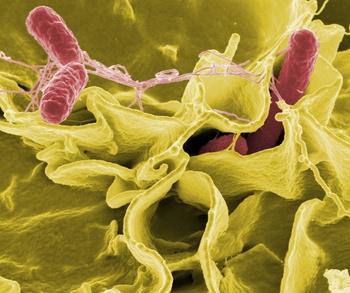Traveler's diarrhea
WHAT IS TRAVELLERS’ DIARRHEA?
Travelers’ diarrhea is the most common illness that affects travelers. It is easily spread from person-to-person or by consuming contaminated food or water. Travelers’ diarrhea is caused by many different bacteria (including E. coli, Salmonella, Shigella and Campylobacter), parasites (including Giardia, Crytosporidium, Cyclospora and others) and viruses (such as norovirus and rotavirus).
RISK OF DEVELOPING TRAVELER’S DIARRHEA
Traveler’s diarrhea is defined as three or more loose stools in a 24 hour period, often accompanied by other symptoms, including fever and vomiting. It is usually caused by bacteria, parasites or viruses in contaminated food and water. Anyone traveling abroad is at risk of getting this, especially in less developed countries. But having IBD may mean you have to be particularly careful about food hygiene and what you eat and drink.
PREVENTING TRAVELER’S DIARRHEA
The following tips might help you to reduce the risk of developing traveler’s diarrhea:
- Wash your hands with soap and dry by air or on a clean towel before eating. You could carry a supply of anti-bacterial disposable wipes for places without washing facilities
- Peel all fruits and eggshells yourself. This includes tomatoes
- Avoid food from street vendors and kiosks, and any food likely to have been exposed to flies
- Avoid unpasteurized dairy products
- Avoid raw vegetables and salads, and foods that may be undercooked, such as steaks and burgers, and foods that have been kept warm
- Avoid shellfish as these can easily be contaminated
- Drink bottled water (ensuring the seal is not broken) or water that has been boiled
- It is worth bearing in mind that you will need to boil the water for longer if you are traveling at high altitude. Sterilizing tablets, if used correctly, are an alternative way of purifying water. You may wish to carry a supply of them as they kill most bacteria
- Use bottled or sterilized water to clean your teeth and when preparing food
- Avoid ice in drinks unless you are sure it is made with safe water
- Avoid swallowing water while swimming
TREATING TRAVELLER’S DIARRHEA
The symptoms of traveler’s diarrhea are very similar to those of IBD. However, traveler’s diarrhea often passes within four days. Drinking plenty of liquids replaces the fluids lost by diarrhea, and prevents dehydration, but be careful of ice-cold, alcoholic, caffeinated, or citrus drinks, which can aggravate diarrhea.
As you improve it may help to eat bland food, such as bananas, plain toast, boiled rice, soup, chicken, and potatoes. You may wish to avoid products containing milk, even several days after recovery, as some people can get temporary lactose
intolerance.
Rest should help you to feel better. If you have to keep traveling, you could take an anti-diarrheal to help stop the symptoms. However, these are not recommended if you have a flare-up of your IBD. Bloody diarrhea could either be caused by a flare-up of your IBD, or a bacterial infection which needs treatment with antibiotics. Talk to your doctor if you feel that you might be at risk of traveler’s diarrhea or developing such an infection. Check what you should do when you are away if you develop a fever or any other symptoms associated with your IBD, and if you should take a course of these antibiotics with you on your trip.
For more suggestions on how to cope with diarrhea, see our section Managing Diarrhea and Constipation.









